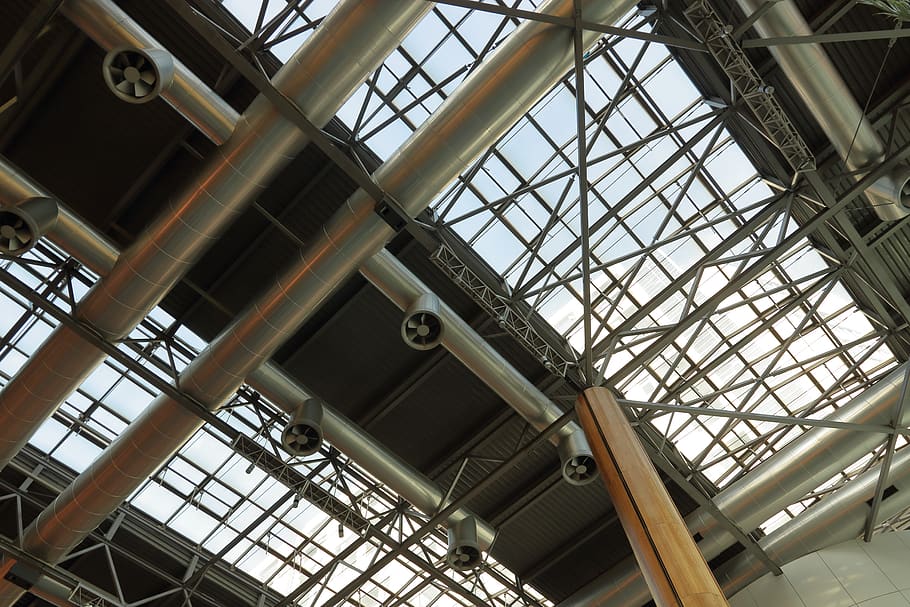HVAC balancing
Contents |
[edit] Introduction
Heating, ventilation and air conditioning (HVAC) balancing is the process of conducting a comprehensive inspection of all aspects of HVAC systems, even when the systems involve independent components. The purpose of the process is to ensure that HVAC systems are operating properly by delivering the correct airflow throughout the facility.
The need for HVAC balancing becomes particularly apparent, for example, when space occupancy or usage change over time, but HVAC systems are not adjusted to respond to these changes. Consequently, temperatures may fluctuate from space to space, resulting in rooms that are too hot or too cold.
Regular inspection and maintenance ensures that systems are operating optimally. This form of maintenance is generally conducted by HVAC balancing consultants trained to evaluate system interaction with other elements of the building.
[edit] Inspection components
A typical report details all equipment found, the normal operating range or load design and the actual conditions found. The report should include comprehensive visual and mechanical evaluations.
The visual inspection of the components will uncover air leaks, loose connections or joints, pinched or perforated ducts, blockages, inappropriate ductwork (too long, too small or too sharply turned) or other parts of the system that may be malfunctioning.
During the mechanical evaluation, technicians test system performance by measuring airflow. They also record humidity levels, heat gains and heat losses.
This report is then used as the framework for the necessary repairs or corrections that will optimise the equipment and return it to its original performance levels. It also notes other potential problems that may be discovered during the visual and mechanical inspection process.
[edit] Inspection outcomes
In addition to resetting HVAC systems to their proper operating conditions, balancing activities can help improve overall efficiency and decrease energy demands. HVAC balancing can also help to increase the operational lifespan of equipment by repairing mechanical issues that occur over time. Building occupants should also experience more comfortable temperatures and improved indoor air quality as a result of the HVAC balancing process.
HVAC balancing will also take place during the commissioning process. For more information see: Commissioning.
[edit] Related articles on Designing Buildings
- Air conditioning.
- Air infiltration testing.
- Amber warnings raise building overheating concern.
- Approved Document F.
- Building services.
- Commissioning.
- Confirming knowledge of building services.
- COVID-19 and the US HVAC sector.
- Ductwork.
- Effective ventilation in buildings.
- Humidity.
- HVAC.
- Indoor air quality.
- Mechanical, electrical and plumbing MEP.
- Training for pre-commissioning cleaning of pipework systems.
- UV disinfection of building air to remove harmful bacteria and viruses.
- Ventilation.
Featured articles and news
RTPI leader to become new CIOB Chief Executive Officer
Dr Victoria Hills MRTPI, FICE to take over after Caroline Gumble’s departure.
Social and affordable housing, a long term plan for delivery
The “Delivering a Decade of Renewal for Social and Affordable Housing” strategy sets out future path.
A change to adoptive architecture
Effects of global weather warming on architectural detailing, material choice and human interaction.
The proposed publicly owned and backed subsidiary of Homes England, to facilitate new homes.
How big is the problem and what can we do to mitigate the effects?
Overheating guidance and tools for building designers
A number of cool guides to help with the heat.
The UK's Modern Industrial Strategy: A 10 year plan
Previous consultation criticism, current key elements and general support with some persisting reservations.
Building Safety Regulator reforms
New roles, new staff and a new fast track service pave the way for a single construction regulator.
Architectural Technologist CPDs and Communications
CIAT CPD… and how you can do it!
Cooling centres and cool spaces
Managing extreme heat in cities by directing the public to places for heat stress relief and water sources.
Winter gardens: A brief history and warm variations
Extending the season with glass in different forms and terms.
Restoring Great Yarmouth's Winter Gardens
Transforming one of the least sustainable constructions imaginable.
Construction Skills Mission Board launch sector drive
Newly formed government and industry collaboration set strategy for recruiting an additional 100,000 construction workers a year.
New Architects Code comes into effect in September 2025
ARB Architects Code of Conduct and Practice available with ongoing consultation regarding guidance.
Welsh Skills Body (Medr) launches ambitious plan
The new skills body brings together funding and regulation of tertiary education and research for the devolved nation.
Paul Gandy FCIOB announced as next CIOB President
Former Tilbury Douglas CEO takes helm.
UK Infrastructure: A 10 Year Strategy. In brief with reactions
With the National Infrastructure and Service Transformation Authority (NISTA).























